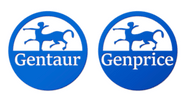Description
CRB1 Antibody | 7153 | Gentaur UK, US & Europe Distribution
Host: Rabbit
Reactivity: Human
Homology: Predicted species reactivity based on immunogen sequence: Mouse: (82%)
Immunogen: Rabbit polyclonal CRB1 antibody was raised against an 18 amino acid peptide near the center of human CRB1.
The immunogen is located within amino acids 780 - 830 of CRB1.
Research Area: Signal Transduction
Tested Application: E, WB
Application: CRB1 antibody can be used for detection of CRB1 by Western blot at 1 - 2 μg/mL.
Antibody validated: Western Blot in human samples. All other applications and species not yet tested.
Specificiy: Alternatively spliced transcript variants have been observed. CRB1 antibody i spredicted to not cross-react with CRB2.
Positive Control 1: Cat. No. 1308 - Human Small Intestine Tissue Lysate
Positive Control 2: N/A
Positive Control 3: N/A
Positive Control 4: N/A
Positive Control 5: N/A
Positive Control 6: N/A
Molecular Weight: Predicted: 142 kDa
Validation: N/A
Isoform: N/A
Purification: CRB1 Antibody is affinity chromatography purified via peptide column.
Clonality: Polyclonal
Clone: N/A
Isotype: IgG
Conjugate: Unconjugated
Physical State: Liquid
Buffer: CRB1 Antibody is supplied in PBS containing 0.02% sodium azide.
Concentration: 1 mg/mL
Storage Condition: CRB1 antibody can be stored at 4˚C for three months and -20˚C, stable for up to one year.
Alternate Name: CRB1 Antibody: LCA8, RP12, Protein crumbs homolog 1
User Note: Optimal dilutions for each application to be determined by the researcher.
BACKGROUND: CRB1 Antibody: CRB1 (Crumbs homolog 1) plays a role in photoreceptor morphogenesis in the retina. It may maintain cell polarization and adhesion. CRB1 is similar to the Drosophila crumbs protein and localizes to the inner segment of mammalian photoreceptors. The first identified human homolog, CRB1, is expressed in retina and some parts of the brain, leaving room for another homolog to function in epithelial tissues. Mutations in this gene are associated with a severe form of retinitis pigmentosa, RP12, and with Leber congenital amaurosis.






